Rain World: Beautiful, Unforgiving, Barbed Poetry
Surviving in a post-apocalyptic wasteland was never going to be a walk in the park, but that doesn’t mean it can’t be breathtaking.
Adult Swim Games via GIPHY
Rain World is, bear with me here, like a snake cube. That’s right, the little wooden puzzle bricks held together with elastic. (If you don’t know them, these) Both of them are made of humble material, they both look simple to process and complete, when you see somebody doing it correctly it looks majestic, but when you get stuck, and just can’t do it, it seems impossible, implausible, and even, a big, old waste of time.
Videocult’s first title has been doing the rounds for a good few years now. There’d be nothing for a few months, and then a new, amazing GIF of the game in action would appear -the Slugcat hero slithering to-or-fro, hither-or-tither- and interest would peak again. It’s impossible to deny that the game in motion is like greased silk, and those bite sized chunks of the game managed to completely capture the formula of the best bits of Slugcat’s journey, and hide away the divisive parts, and the negatives.
The game is, at it’s core, a survival title; and is -from about five minutes in- completely hands-off with you. On a play loop it’s rather simple; eat, find hibernation, survive, continue until you can reach new areas to eat in, to find new hibernation areas in, and to survive anew within.
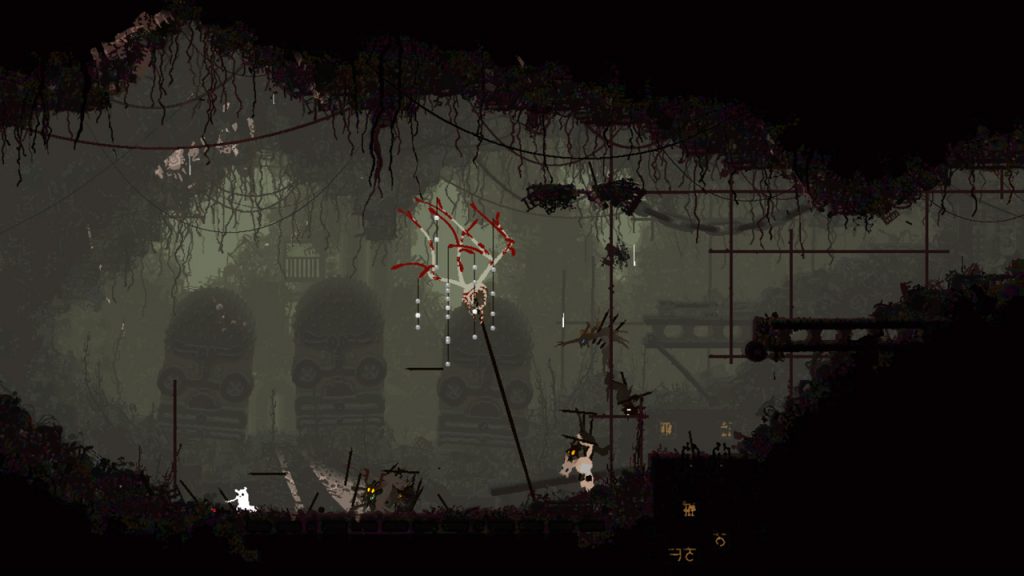
Where the main, initial, conflict with the game comes is in that it looks and controls, in many ways, like a platform game. Instinctively the assumption is that you must always press forward, you must travel X screens in order to find the next place to rest, you must never look back. When, in actual fact that is not the case, and I confess, it took me half-a-dozen deaths from bullish exploring to find out that, if push comes to shove, you can sleep in the same little vault until the mutated cows come home.
Once aware of that, however, the survival-based nature of the game became more plausible. You could spend a day creeping a little further in one direction, tempting fate before retreating back to safety for a rest. In this you could play witness, rather than victim, to new areas, and find both route and method to effectively close the gap to the next area in an efficient and timely manner.
And, in my opinion, the game needs to be played in this careful, curious manner of looking before you leap; not nessecirly clearing an area, but certainly familiarising yourself with its ways. Because, if you rush ahead, you are – frankly, going to die.
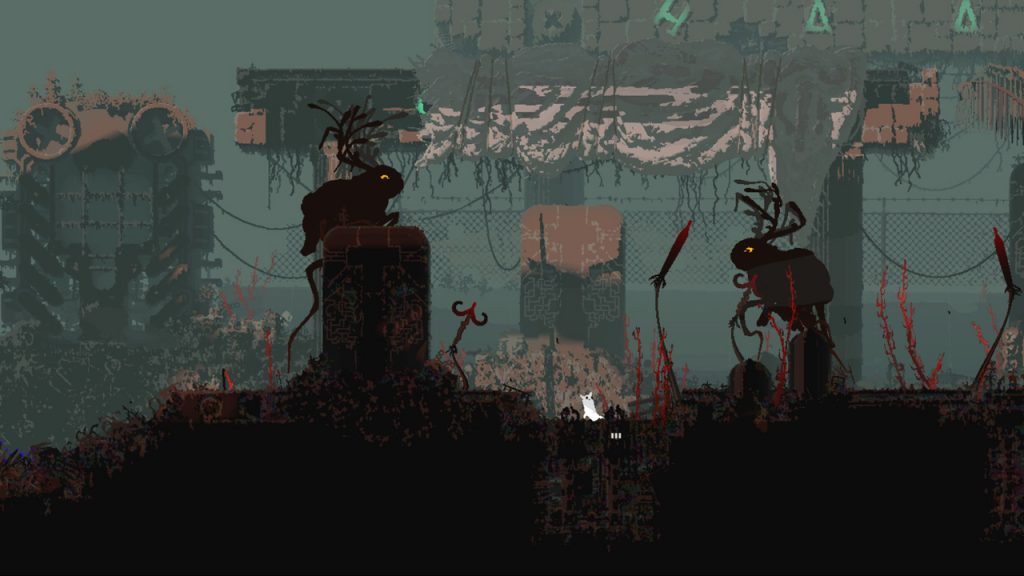
Death in the game comes quickly, practically anything bigger than you will kill you in one hit; and while you can injure them -breaking limbs with a lucky throw- or even sometimes kill them, most of the times it’s best to evade. You can also be caught in the deadly rain, there is no safe shelter except for the safety of the hibernation spots, you seal yourself in one of those or you die. There is ample warning of the rain’s approach – a bar in the bottom corner, the sound of the world, and even the lighting in the world; once you’ve experienced it’s roaring, blinding downpour you learn very quickly to not get caught out in it.
Death results in your progress being knocked down to the last major game checkpoint; those checkpoints being certain amount of successful rests, or -it seems- hitting new locations. If you’ve been dawdling for a few years (each rest is kind of like a season) then you’ll lose a lot of that; if you have been gradually progressing, and hit a few milestones then you’ll hardly feel the burn. There’s also at least one hidden way to stop the regression, but I’ll save those for you to discover by accident as you play; as I did many of the secrets hidden behind rocks, in plant pods, or on beasties, But, it’s moments like discovering that little ‘regression’ plug, which moves to where you last died between hibernation that make you feel like you’re peeling back layers of a puzzle – something that I’m regularly informed unravelling the Souls series feels like.
The folly that leads to death isn’t always from overstepping your exploration; sometimes it simply comes from the nature of the enemies. While each enemy type can be evaded with relative ease, even without throwing objects at them to wound them; a combination of enemy numbers, and a ticking timer, and enemies sometimes waiting dormant once they have lost your scent, can mean that you spend a lot of time simply kiting enemies out of your way so you can progress. Sometimes it just feels easier to die than wait.
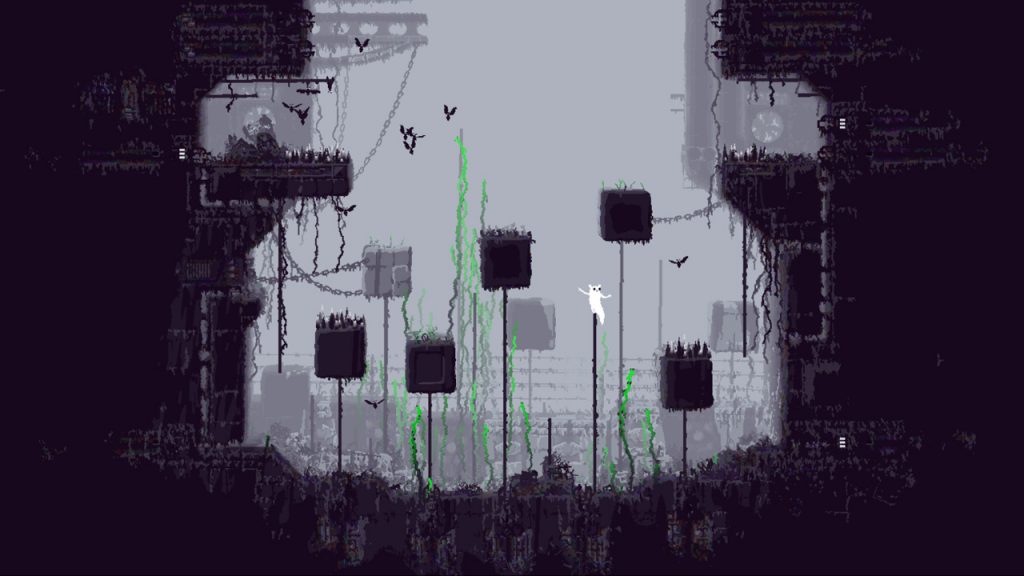
That isn’t to say that the level design, or more-so room design, doesn’t help you. Many tunnels which lead off to other screens often have a white glow to them, so you can always see a pathway; usefully the colour shifts to the colour of any creepy crawlies as they clamour-through; you can use this to quickly change path. Alternately you might want to engage in -as often happened to me- some Scooby-Doo style antics of passing through the same tunnel past the predator, then changing to another passage as to ensure you’ve outsmarted them. While there’s no ducking and dodging through chests and wardrobes, evading an enemy as prey does feel good… until you realise you might have wasted a bit too much time doing so.
I suppose now is the best time to broach the subject of my greatest bugbear with the game. The controls.
The Slugcat is practically liquid, as a matter of fact, the best way to describe the results of attempted precision control would be that it feels like trying to steer a remote-controlled car which has been sealed in a beanbag. At times it’s impressive and amazing, that beanbag will squeeze into the most ridiculous spaces, and achieve perfect finesse in linking up with elements of the terrain. However, at other times the jump has as much power as a whoopee cushion, and -worse still- sometimes Slugcat will simply shove its head into a hole next to the one you are trying to use, leaving it’s legs tragically dangling at the lips of the beasty you were attempting to evade.
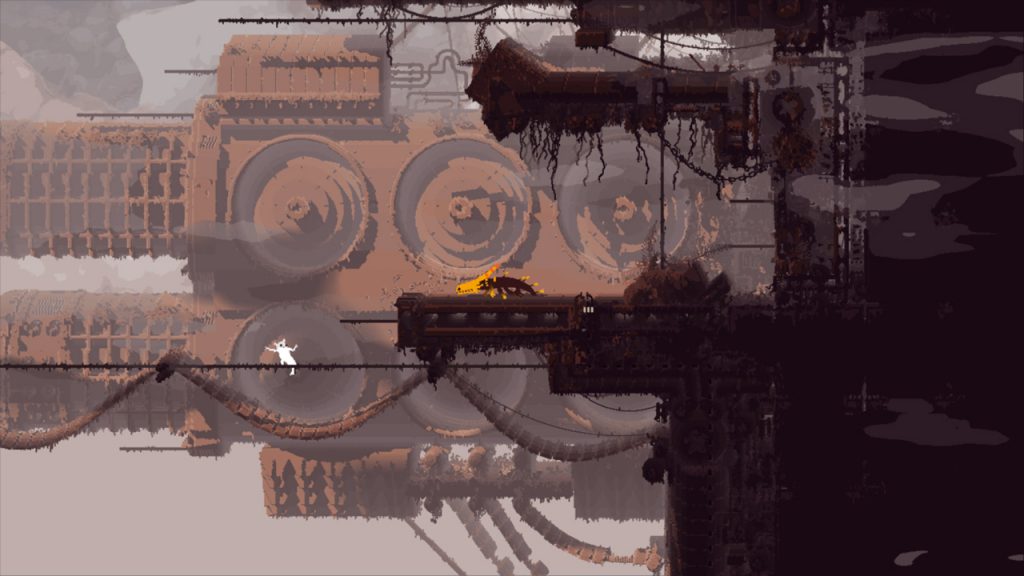
At some points the protagonist moves with amazing grace and style, as we saw in all those GIFs, wrapping around posts and pillars, outwitting those deadly nightmare creatures like a hare from a fox. Other times you’ll rotate on the spot, jump a quarter of its height and put down the control, watching as your corpse is dragged off to a hidey-hole for consumption.
Unlike a certain hair-care product, I’m not going to embark on a science bit, but, what I do want to do is dedicate a paragraph to comparisons with other games. The slipping and sliding, passing onto screens only to be instantly thrown to your death draws up both frustration, and fond memories. The Oddworld series, Heart of Darkness, Another World, and -in a way- the Souls series all used this tactic to slow the character down, similarly Rain World also has no fear in featuring level layouts that encourage you to screw caution and rush ahead. I’ve too many memories of Abe slipping off platforms to his death, of Andy being grabbed and pulled into the darkness because he wasn’t running fast enough. Rain World accomplishes both of these in a wonder fashion.
But, it’s different. It’s different because most of those were linear, and carefully structured. Or, in the case of the exception –Souls– were actually spiralling paths that you turned into webs as you unlocked the shortcuts. (Exception obviously Demon Souls with it’s various points of entry and clever out-of-order stages in world structure)
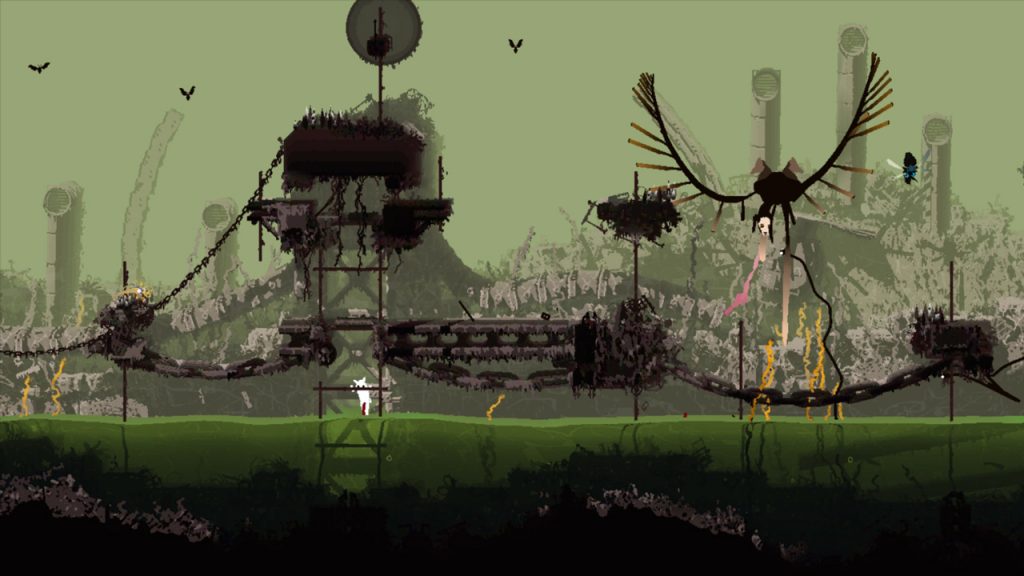
Rain World isn’t that though, it’s wide hubs stacked tall. Which I think is going to be a further filter on the completion rate among players. Some won’t make the click from platformer to survival, others won’t stumble upon the secrets required to survive, and some just might last the climb through the dozen sections, and it’s nearly 1’500 rooms.
I can tell you now though, there’s going to be a whole lot more GIFs to come for this challenging, yet beautiful game, and there’s going to be a whole lot of tip lists and guides published, and I think this is the most I’ve ever been sure of that about any game I’ve reviewed.
Footnote: As the astute may have noticed, we have had to use high-resolution screenshots from the Steam page of the game for this review. This is due to the reviewer’s computer being infected with a virus (Merry Christmas Bruce) near the end of the review period.
Comments are closed.